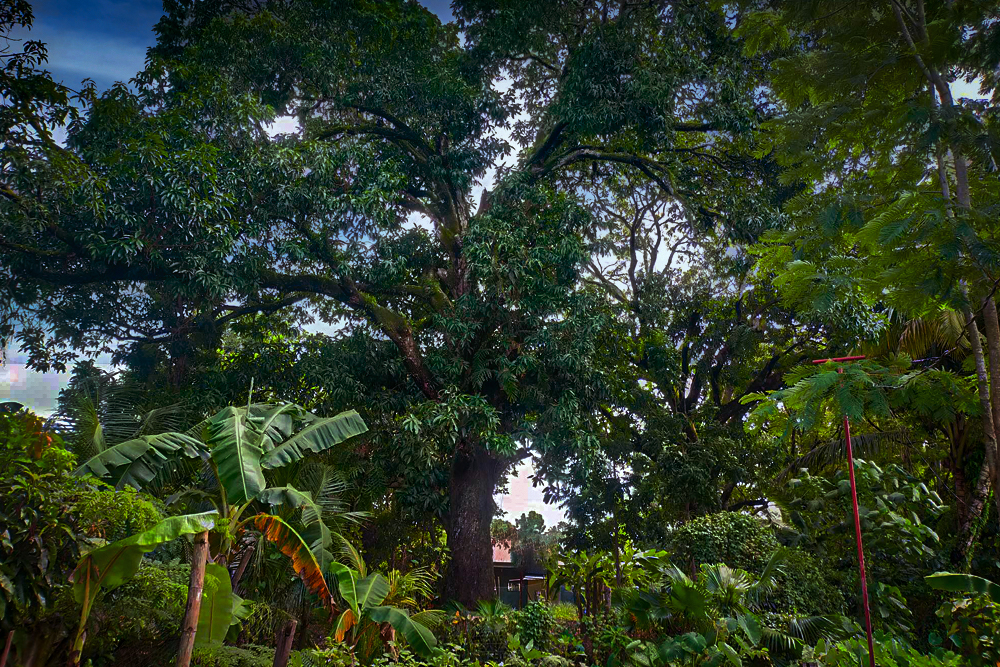The Philippines is home to several mango varieties, each with its own unique characteristics and flavors. The most popular Philippine mango variety is the Carabao (also known as “Manila” mango). The Philippine mango or the Carabao mango, is a highly prized tropical fruit that is renowned for its exceptional flavor, sweetness, and aroma.
The leaves of the Philippine Mango tree are elliptical or lance-shaped, and they are arranged alternately along the branches. They are typically dark green, glossy, and grow up to 15 centimeters (6 inches) in length. The bark of mature mango trees is rough and grayish-brown, with vertical fissures and wrinkles. The bark of mature mango trees is rough and grayish-brown, with vertical fissures and wrinkles. Of course, the most famous feature of the mango tree is its fruit. Mangoes are typically borne on the tree in clusters known as “panicles.” The fruit is oval or kidney-shaped, and the size and color can vary depending on the variety. When ripe, the skin is often yellow or orange, and the flesh is juicy and sweet. Although there are no law or official proclamation, the Philippine Mango is considered the country’s national fruit. It holds a special place in Filipino culture and is often referred to as the “King of Fruits” in the Philippines.
Binomial/Scientific Name:
Mangifera ‘Carabao’
Origin:
The Mangifera indica originated in South Asia (India, Bangladesh and Myanmar). The Mangifera ‘Carabao’ is a result of many years of cultivation.
Height:
Philippine Mango trees can grow to be quite large. They typically reach heights of 10 to 40 meters (33 to 131 feet), depending on various factors such as soil quality, climate, and pruning.
Propagation:
Mango trees can be propagated through various methods, including seed propagation, grafting, and air-layering. However, most commercially grown mango trees are propagated through grafting to ensure the desired fruit quality.
Found in:
Mango trees thrive in tropical climates with distinct wet and dry seasons. They require warm temperatures and frost-free conditions to flourish.
Usage:
Mango Fruit
The primary use of the mango tree is, of course, the consumption of its fruit. They are enjoyed fresh, sliced, diced, or used in various culinary applications. Unripe or green mangoes are used to make various dishes, beverages, and condiments. They are used in salads, relishes, and pickles. Mangoes are often made into jams, jellies, preserves, and pickles to extend their shelf life and create a variety of products.
Leaves
In some traditional systems of medicine, mango leaves are used for their potential medicinal properties. They are believed to have anti-inflammatory, antidiabetic, and diuretic effects.
Bark
In certain traditional practices, the bark of the mango tree is used in remedies for various ailments. It is believed to have astringent and antiseptic properties. The bark and twigs of the mango tree can be used to create natural dyes for textiles and crafts.
Flowers
Mango flowers can be used in culinary applications, particularly in traditional recipes. They are sometimes used in salads, stews, and chutneys.
Seeds
Mango seeds can be processed to extract mango seed oil. This oil is used in some cosmetic and skincare products for its moisturizing properties.
Fuel and Timber
In some regions, the wood of the mango tree is used as a source of fuel.
Landscaping
Mango trees are planted for shade and ornamental purposes in gardens, parks, and landscapes.
Cultivation:
Well-draining soil is essential for mango tree cultivation. They prefer slightly acidic to neutral soils.
Photos
Find out more introduced species of trees in the Philippines.

